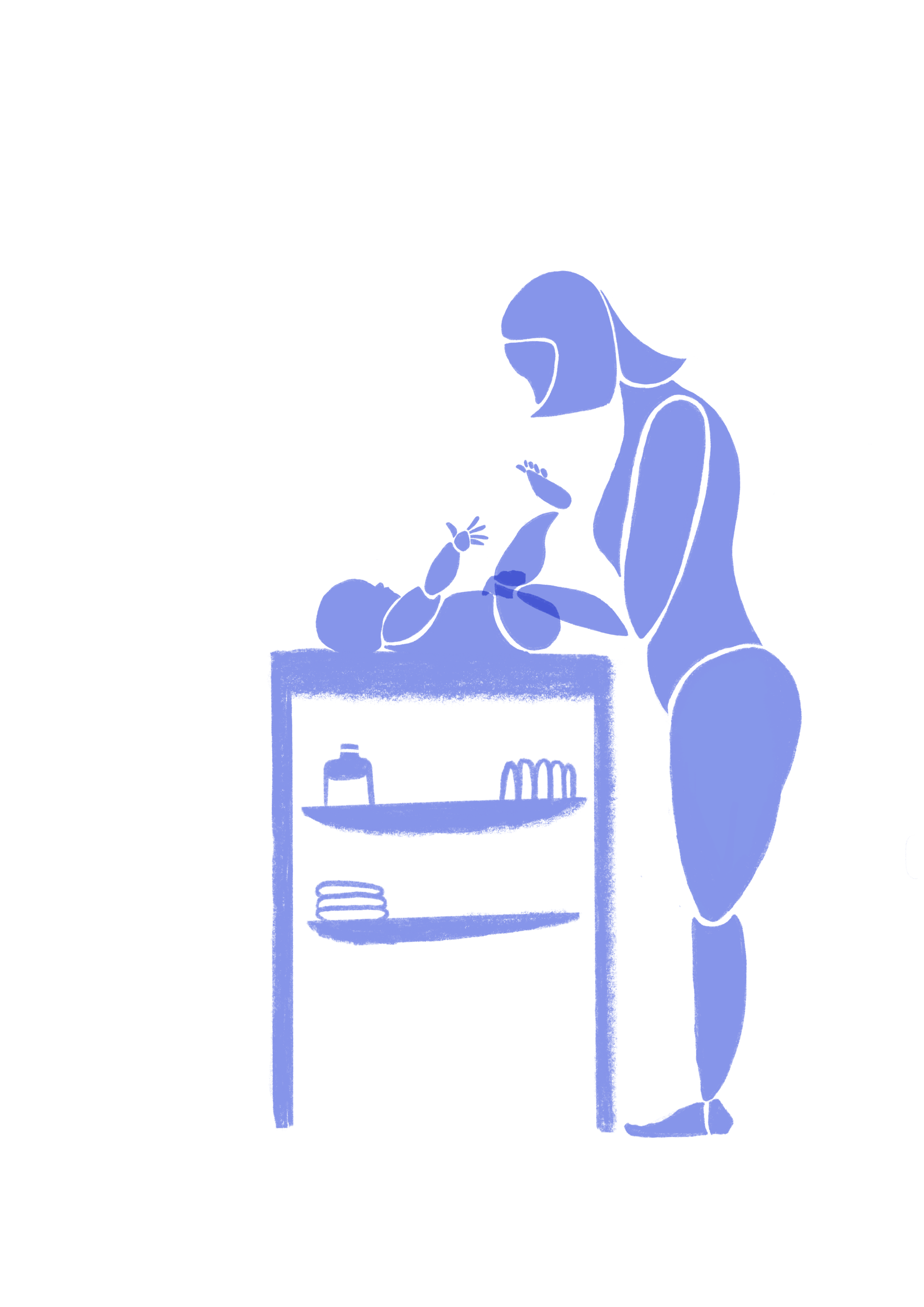Changing Tables
The change table is the most frequently used item of nursery equipment. From birth to 18 months it will be used around 8
times a day. The task usually takes between 2 - 8 minutes but as
baby develops, the duration and difficulty increases.
As simple as “changing a nappy” sounds, this is a complex manual task involving prolonged forward bending postures, awkward twisting, reaching and difficult lifting. These are physical actions that are strongly associated with back disorders. The important point to note is that purpose built change tables actually direct the action and posture of the carer during the task. Additionally the primary cause of musculoskeletal injuries to children under two years is falling from a change table. We can’t change the need for the task, but we can control how we accomplish it. For the sustainability of this equipment, it is worth considering the functional versatility and possible future use.
Safety points
to remember
The International Standard requires the change table to have side rails of a minimum of 10cm from the change surface. This does not include the change mat insert.
Always keep focus and one hand on baby.
The change bench work surface should be at least waist height of the carer.
If the change table has castors, they must be lockable.
Never leave a baby unattended on a change table.
Baby’s fall off change benches. It’s the primary cause of fall injuries in infants and toddlers.
Ergonomic points
to remember
The change table should have adequate knee and foot space for correct stance and bending to lower and lift the baby.
Change bench height should be at the level of your elbows for close work.
Work surface too high causes upper back/shoulder pain when lifting and lowering baby load.
Work surface too low causes held bent posture and lower back weakness before lifting load.
Position the change table so as items are within reach in upright stance.
The position and size of the baby load will affect lower back function when lifting.
Surface should have adequate arm placement and reach space for carers access to grasp and lift baby load.
To lift always start with bent knee position, slightly flexed torso, minimise reach to scoop hands under the arms and chest of baby.
Avoid prolonged torso flexion (bending forward) posture prior to lift, this stretches the spinal muscles and creates weakness in the joints.
Avoid reaching for change items lower than work surface height.
Avoid twisting and bending to perform the nappy change task and/or access change items
Our Rating System
With our star rating system, we’ve figured out where common parenting products miss the mark. All the hard work has been done for you!






